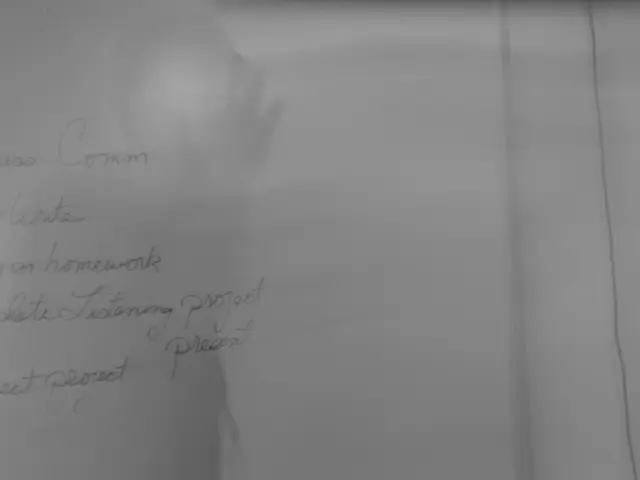Recommendation issued for a protective directive addressing worker safety from ionizing radiation hazards.
The State Parliament faces a budget battle, and it's heated! Minister Klepsch defends her department against proposed cuts, declaring that there's no wiggle room for further slashes.
By Simona Block
Dresden - Barbara Klepsch, the 59-year-old CDU Culture Minister, signals an end to budget savings in her domain. Speaking to the German Press Agency, she says, "In my area, I can't find a speck of room for additional reductions that won't lead to closures."
A quick glance:
- Culture Minister Klepsch: No further cuts leading to closures
- Prioritizing Saxony's cultural landscape
- Cultural space funds remain at €104 million
- Theaters and orchestras receive €8.76 million in the Cultural Pact
- Klepsch advises against unrealistic hopes in tight financial times
The Gist
In light of the squeezed budget, it's a tightrope act for Klepsch's team. "Our philosophy was: trim as little as possible and set priorities," Klepsch reveals. Consequently, the cultural space funds are untouched, with €104 million each planned for 2025 and 2026. "This gives regions, facilities, and local partners a solid foundation for planning," she says. The music schools, too, remain at the current budget of €7.87 million, ensuring the preservation of Saxony's musical heritage.
Saxony banks on its unique cultural space law to finance cultural activities in municipalities. Eight cultural spaces make their own decisions on funding for facilities and projects, with the Free State supporting them in cultural expenses.
The Cultural Pact at Parity
The funds for the so-called Cultural Pact, designed to promote certain theaters and orchestras, remain at €8.76 million, equal to 2024 levels. This helps balance out differences in wage scales between various facilities. With increased operational, personnel, and material costs, nine venues received an extra €5 million in 2023 and 2024, but that rescue package is now absent. "That's a significant issue for theaters in light of ongoing cost increases," Klepsch admits.
The subsidy for the memorial foundation has been trimmed to 90%, but this is only for the current year. In 2026, it will return to 100%, recognizing the foundation's development plan calling for a rise in personnel, Klepsch shares.
Budget Cuts Impact
Cuts of 5-15% are applied to state cultural associations, resulting in fewer projects.
Klepsch Stands Her Ground
"We haven't gone mad with the red pen," Klepsch responds to criticism. Both state-owned enterprises and her department have felt the pinch. "We've implemented a freeze on personnel and material costs in the budget," she clarifies, meaning no new positions will be filled and all project posts remain vacant.
"Recognizing the tough financial situation, we should set aside unrealistic expectations," Klepsch advises, preparing for the parliamentary debate. The upcoming budget, she notes, will serve as a transition plan. "Once the economy recovers and tax revenues rise, we're optimistic," she concludes.
In Focus: Saxony's Cultural Scene
For more on Saxony:
- Sachsenburg Memorial Site Construction: More Funds Needed Due to Increased Construction Prices
- Jump into the Cool Water! These are Saxony's most beautiful natural baths
- Rising Knife Violence – Even in Saxony's Schools?
The Long Game: The Future of Saxony's Cultural Landscape
Recent reports indicate that Culture Minister Barbara Klepsch does not anticipate further cuts in the cultural sector of Saxony. This stance suggests a positive outlook for cultural facilities in the region, potentially leading to sustained or increased cultural activities and investments.
- Stable Funding: The absence of further budget cuts signifies a stable financial environment for cultural institutions and projects. This stability is crucial for maintaining existing programs and supporting new initiatives.
- Preservation of Cultural Programs: By not reducing funding, cultural programs and facilities can continue to operate without interruption. This ensures that the community can continue to access cultural resources and events.
- New Beginnings: With a stable budget, there may be opportunities for launching new cultural initiatives or expanding existing ones, contributing to the cultural richness of the region.
- Economic Impact: Stable funding can also support local economies by maintaining jobs and attracting tourists and visitors to cultural events.
- Cultural Development: Not cutting budgets may enable more focused efforts on cultural development, possibly leading to a more vibrant and diverse cultural scene in Saxony.
Overall, Klepsch's stance on no further savings indicates a promising future for cultural facilities in Saxony, potentially leading to sustained or increased cultural activities and investments in the region.
- Minister Klepsch's decision to maintain cultural funding may lead to sustained or increased cultural activities and investments in Saxony.
- The stable financial environment for cultural institutions and projects is crucial for preserving existing programs and supporting new initiatives.
- The absence of further budget cuts allows cultural programs and facilities to continue their operations without interruption, ensuring community access to cultural resources.
- Stable funding could present opportunities for launching new cultural initiatives or expanding existing ones, contributing to Saxony's cultural richness.
- A promised future of cultural development in Saxony may be possible through the preservation of funds, potentially leading to a more vibrant and diverse cultural scene.







